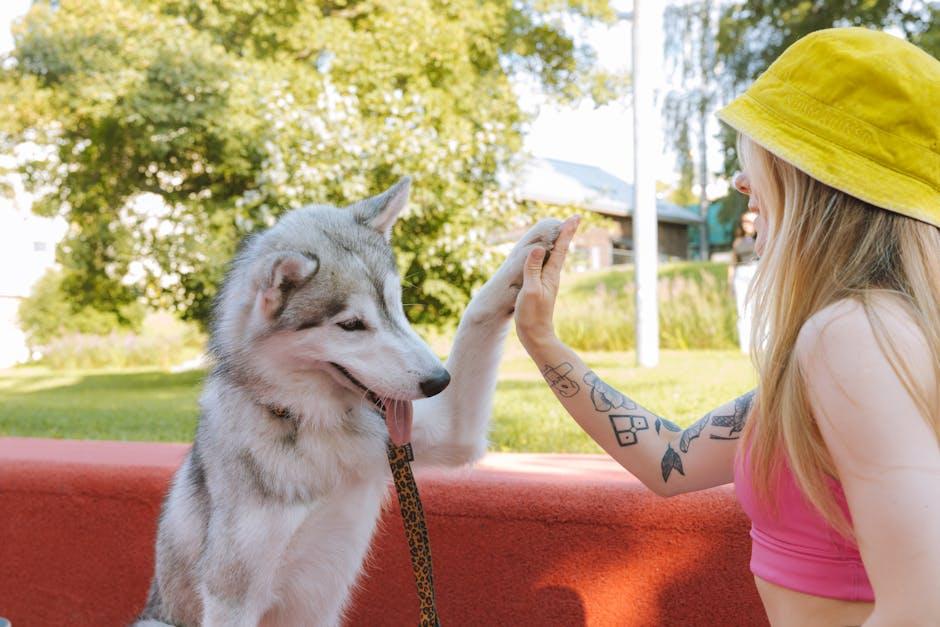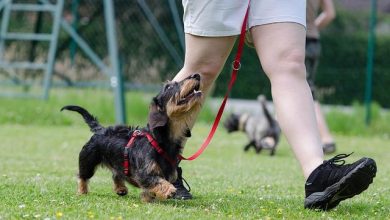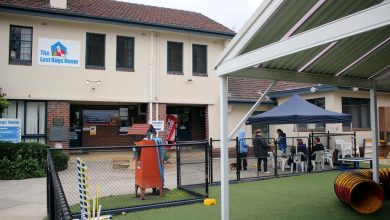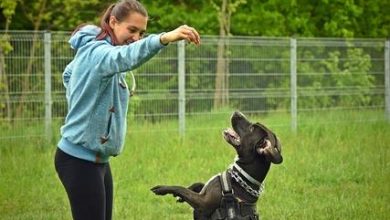How to Teach Advanced Commands Using Positive Reinforcement

In the world of animal training, communication transcends the boundaries of language, weaving an intricate dance between humans and their companions. At the heart of this dance lies positive reinforcement, a method that not only fosters learning but also strengthens the bond between trainer and trainee. As we delve into the art of teaching advanced commands, we embark on a journey that reveals the subtle power of encouragement and reward. This article explores the nuances of positive reinforcement, offering insights and techniques to elevate your training sessions from basic obedience to sophisticated mastery. Whether you’re guiding a spirited canine through complex tricks or helping a feathered friend navigate new challenges, the principles of positive reinforcement can transform the learning experience into one of joy, trust, and mutual respect. Join us as we unlock the secrets to successful training, where patience and positivity pave the path to advanced command mastery.
Mastering Complex Commands with Canine Psychology
Understanding the intricate nuances of canine psychology can be the key to teaching advanced commands effectively. By leveraging positive reinforcement, you tap into a dog’s natural desire to please and learn. Instead of relying on coercion or punishment, positive reinforcement encourages desired behaviors by rewarding them, making training a rewarding experience for both you and your pet. When teaching complex commands, remember to break down each command into smaller, manageable steps. This helps your dog grasp the concept gradually, ensuring they don’t feel overwhelmed.
- Consistency is crucial: Use the same verbal cues and hand signals to avoid confusion.
- Timing matters: Reward your dog immediately after they perform the desired action to reinforce the connection.
- Keep sessions short and engaging: Long sessions can lead to frustration or fatigue.
- Use high-value treats: Choose rewards that your dog finds irresistible to maintain their motivation.
- Gradually increase difficulty: Once your dog masters a command, introduce distractions or new environments to solidify their understanding.
By following these principles, you’ll not only teach your dog advanced commands but also strengthen the bond you share, turning training sessions into a collaborative and enjoyable journey.
Harnessing the Power of Rewards for Effective Learning
In the realm of teaching advanced commands, positive reinforcement stands out as a powerful strategy to encourage learning and retention. This method revolves around rewarding desired behaviors, thereby increasing the likelihood of their recurrence. To effectively implement this approach, consider the following techniques:
- Immediate Feedback: Offer rewards promptly after the desired behavior. This immediate connection helps learners understand the specific action being reinforced.
- Variety of Rewards: Mix different types of rewards to maintain interest. This could include verbal praise, small treats, or extra playtime.
- Consistency: Ensure that rewards are given consistently for the desired behavior to establish a clear pattern of expectations.
- Gradual Increase in Difficulty: As learners master initial commands, gradually introduce more complex ones, continuing to use rewards to reinforce progress.
By strategically employing these techniques, educators can foster an engaging and effective learning environment where learners are motivated to excel in mastering advanced commands. The key lies in the thoughtful application of rewards to create a positive and productive learning journey.

Step-by-Step Guide to Advanced Training Techniques
Incorporating advanced commands into your dog’s training regimen can elevate their skills and enhance your bond. Utilizing positive reinforcement, you can teach complex behaviors with patience and consistency. Begin by ensuring your dog has mastered basic commands, which will serve as a foundation for more intricate tasks. Once ready, identify the advanced command you wish to teach and break it down into manageable steps.
- Introduce the Command Gradually: Start by pairing the new command with a familiar one. For instance, if teaching “roll over,” begin with “lie down” and add the new cue incrementally.
- Use High-Value Rewards: Opt for treats or toys your dog adores to reinforce their learning. Consistently rewarding small successes will build their confidence and enthusiasm.
- Practice Patience: Every dog learns at their own pace. Celebrate progress, no matter how minor, and avoid rushing through the training process.
Remember, consistency is key. Repeat each step multiple times across different sessions, gradually increasing the complexity as your dog becomes more comfortable. By maintaining a positive and encouraging environment, you can effectively teach advanced commands, transforming your dog’s capabilities while strengthening your mutual trust.

Building Trust and Communication Through Positive Reinforcement
When it comes to teaching advanced commands, the bond between you and your pet becomes a cornerstone of success. By utilizing positive reinforcement, you not only shape behaviors but also foster a deeper connection built on trust. This method revolves around rewarding desirable behaviors, which encourages your pet to repeat them. The key to effective communication is consistency and timing. As soon as your pet performs the desired action, promptly offer a reward, such as a treat or verbal praise. This immediate feedback helps your pet associate the command with the positive outcome.
- Clarity in Commands: Use clear and concise words or signals to avoid confusion. Consistency in your commands ensures that your pet understands exactly what is expected.
- Positive Environment: Create a learning space free from distractions. This helps your pet focus solely on the task at hand.
- Incremental Challenges: Gradually increase the complexity of the commands. Start with simpler tasks and build up to more advanced ones, reinforcing each step with rewards.
- Patience and Persistence: Every pet learns at their own pace. Maintain patience and continue to encourage your pet through positive reinforcement, even when progress seems slow.
By embracing these techniques, you not only teach advanced commands effectively but also nurture a relationship that thrives on mutual understanding and respect. This approach transforms training sessions into opportunities for bonding, making them enjoyable and rewarding for both you and your pet.
Closing Remarks
In the vibrant dance of communication between humans and their canine companions, teaching advanced commands using positive reinforcement emerges as both an art and a science. As we close this exploration, let us remember that each interaction with our four-legged friends is an opportunity to build trust, understanding, and mutual respect. By harnessing the power of positivity, we not only guide our dogs towards mastering complex tasks but also deepen the bond that makes this partnership so extraordinary. As you embark on this rewarding journey, may patience be your guide and joy your constant companion, transforming each command into a shared victory and each moment into a cherished memory.



